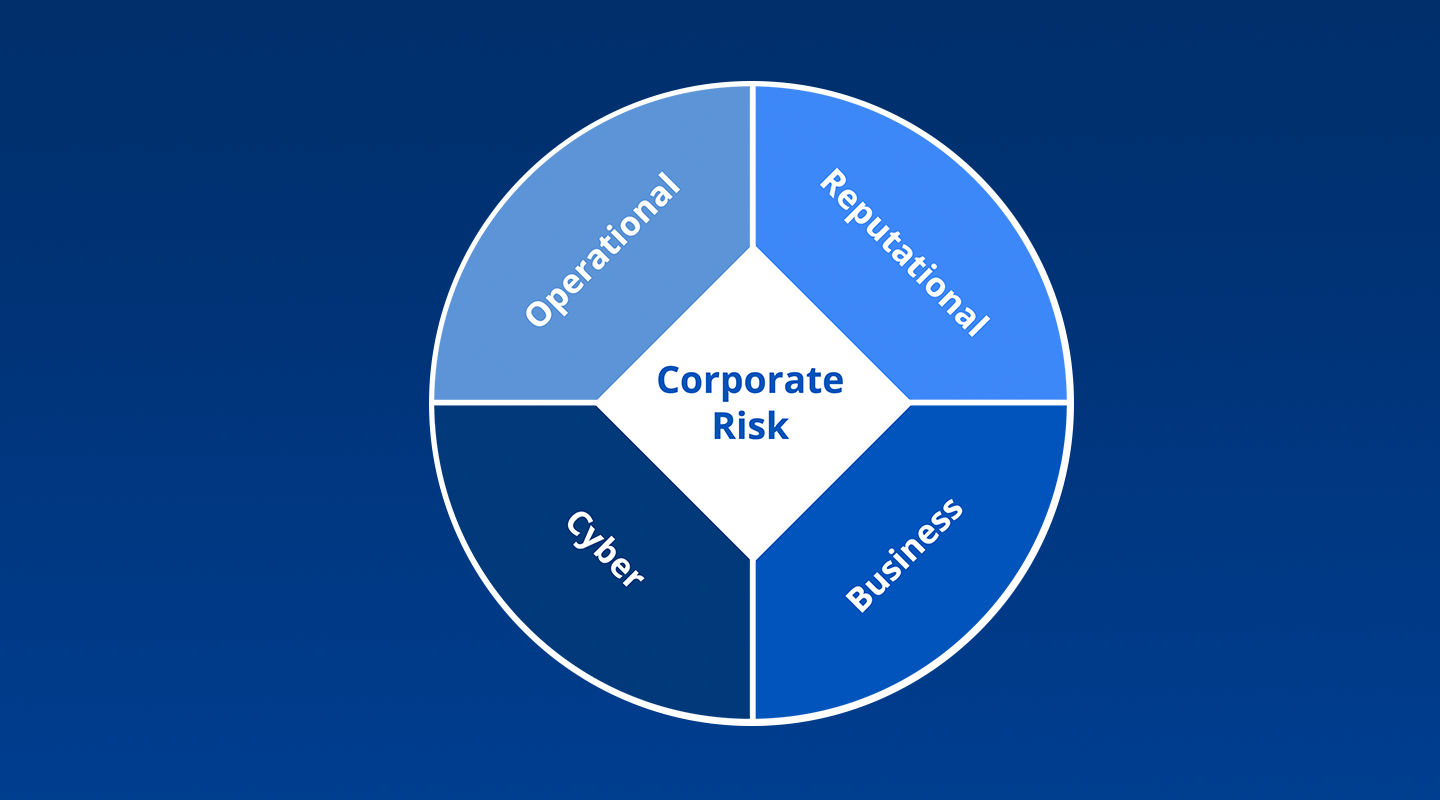Like every aspect of the business world, corporate risk is undergoing a radical transformation. There are many contributing factors, but two stand out: increasing geopolitical instability and the real-time interconnectivity of the world in the digital age. Together, these factors have created an unprecedented upswing in the speed and volume of real-time risks that corporations face on a regular basis.
The result is a risk environment with more events that can change faster and in more unpredictable ways. In other words, mitigating corporate risk has never been more challenging.
At Dataminr, we explain these dynamics in terms of the “surface area” that risk occupies in a given enterprise. In the previous era, risk was more confined to a centralized risk management team. Today, risk is more broadly dispersed across multiple, disconnected departments, occupying significantly more “space” across the organization. Operations is responsible for physical security of locations and assets; Marketing/communications protects the brand; Executive protection is often tucked away within physical security; and IT mitigates cybersecurity threats and protects virtual assets.
Consider, for example, a threat against a retail store location. This would trigger an operational response to secure the site and protect its employees and customers. But it could also threaten reputational risk and business risk. It might even elevate the risk of a cyber attack.
A highly fragmented risk management environment significantly compromises response time and response effectiveness. When a real-time risk is detected, sophisticated large enterprises launch coordinated responses involving interdepartmental SLAs, pre-determined communication flows, crisis teams, and operations centers. But even the most highly coordinated efforts still add considerable time between threat detection to response. The actual decision-making power rests with the individual department leaders for each area of risk. Even with a highly coordinated response; The Marketing department decides if and how to respond to an attack on the company’s brand; the physical security team decides how to respond to a threat to a traveling executive; and the IT department decides how to respond to a cyber attack. In today’s world of real-time risk – where every second counts – are the motions of enterprise wide coordination worth the time required?
Dataminr works with a variety of customers who are at the forefront of building best practices for this new paradigm. What we see developing with some of our customers, is a risk management framework that de-silos real-time information so that risk detection capabilities are immediately placed in the hands of the people responsible for evaluating and responding to potential threats in the context of their sphere of responsibility.
What this graphic illustrates is how to organize disparate risk disciplines into four broad categories that connect with different departments but can be coordinated by a central owner of corporate risk.
Our customers use Dataminr’s AI Platform and products to detect real-time events and unanticipated risks occurring across both the physical world and digital domain; Dataminr delivers the earliest alerts on risks when they first emerge within over 150,000 public datasets ranging from public social media, local blog/news sources, the deep/dark web and public sensors. These alerts are delivered at this central point of the whole to quickly discover credible real-time risks and threats, and assign ownership of risk evaluation to appropriate business owners. This approach has several advantages:
- Corporate risk maintains a single, unified point of view, regardless of the event
- Functional owners evaluate potential impact to their respective areas and report back
- Overall, the organization can more easily coordinate response across multiple departments
We believe this framework is essential given the speed and complexity of today’s risk environment. By allowing real-time risk and response to be centrally managed, while information reaches critical decision makers across the organization in real time, enterprises are best positioned to launch a coordinated response to emerging threats quickly and efficiently.



